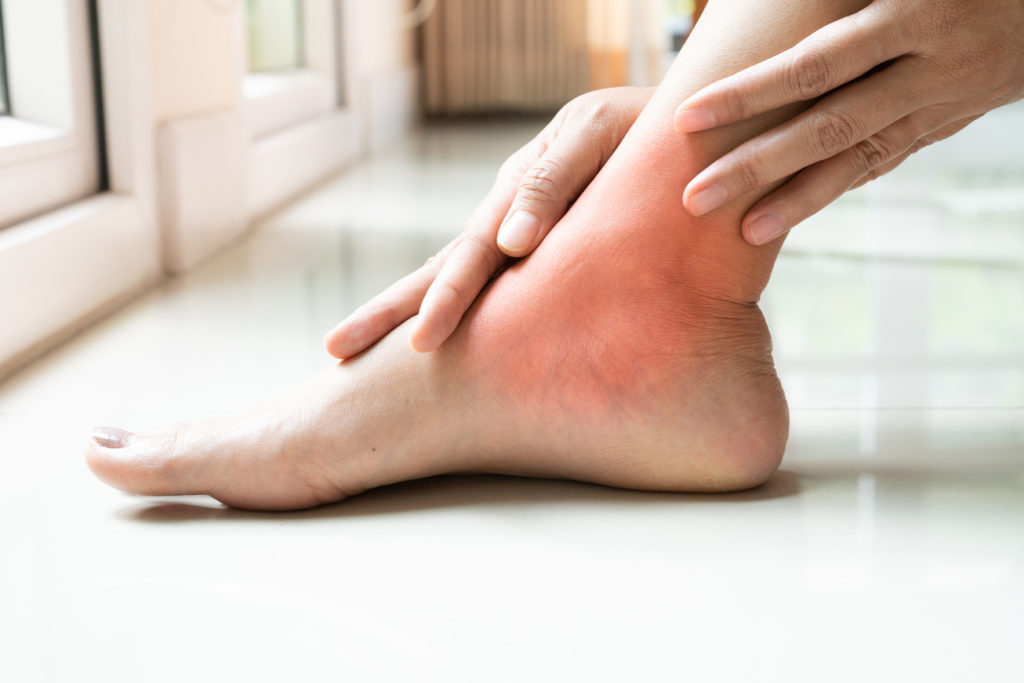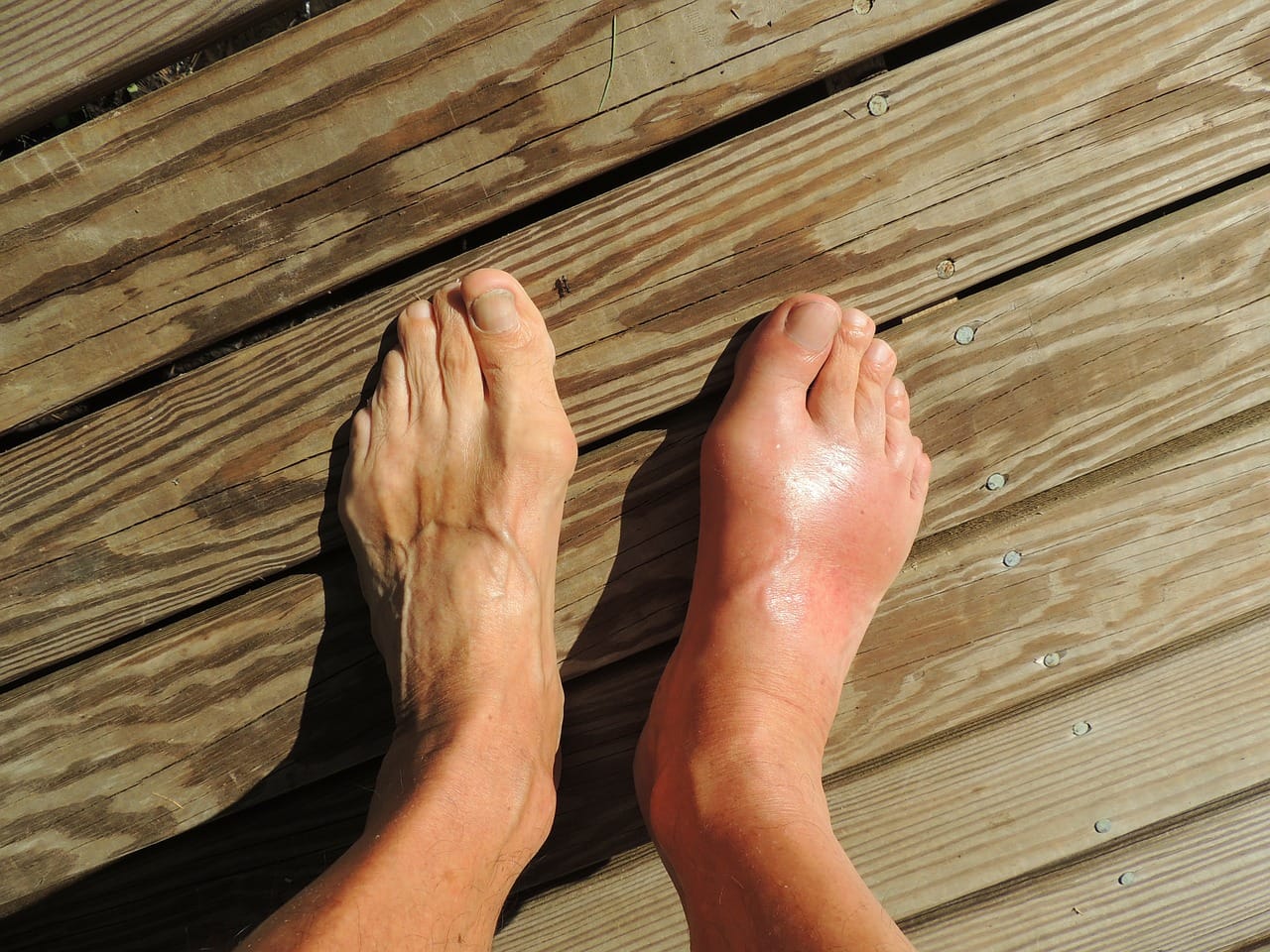What is Gout?

If you’re wondering, what is gout? This article will help you understand the symptoms, how it is diagnosed, and what treatment options are available. You’ll also discover what foods contain purines. A low-fat, non-dairy diet rich in fruits and vegetables can help prevent gout. Your doctor can also offer you some dietary recommendations to reduce your risk of developing this condition. Gout is a painful condition.
Symptoms
Gout is an illness that can affect the joints and surrounding tissues. While most attacks are not painful, they can become inflamed and leak gritty, white material. These crystals are made of uric acid and can damage the bone and cartilage within the joint. In severe cases, it can lead to a swollen joint and debilitating pain. If the disease is not treated, it may lead to tophi, which are mounds of uric acid crystals. Treatments for gout include taking anti-inflammatory medicines, eating well, and exercising to reduce the tophi.
The most common site for a gout attack is the metatarsal-phalangeal joint located at the base of the big toe. Although this is the most common location, the other affected joints are the knee, ankle, elbow, wrist, and finger. Gout symptoms may be worse at night when dehydration and low body temperatures promote crystallization of uric acid. A patient may develop clusters of painful crystals, known as gout. A flare-up of gout can last for days or even weeks.
Genetics and long-term use of medications can also affect urate levels. A large percentage of primary gout sufferers have inherited genes. Some people produce more urate than their kidneys can handle, making the disease worse with time. Moreover, gout often develops in overweight individuals, which means their kidneys cannot properly filter it out of the body. As a result, they are more prone to gout than normal people.
Treatment options
Treatment options for gout involve combining medication and lifestyle changes to reduce the symptoms of gout. For advanced forms of the disease, such as chronic tophaceous gout, medications and lifestyle changes may not be sufficient. This is because the condition results in the formation of uric acid tophi, which are deposits of uric acid that can damage bone and cartilage. Surgical treatment may involve the removal of tophi, the painful growths caused by gout.
Nonsteroidal anti-inflammatory drugs (NSAIDs) such as colchicine are commonly used as an acute-gout treatment. However, they must be discontinued if the symptoms have resolved. Similarly, intravenous colchicine can have serious toxicities and side effects, so it is better to use oral formulations instead. The high-dose oral colchicine is generally poorly tolerated. Lower doses of the drug are well tolerated. They may be combined with NSAIDs.
Pharmacological treatment of gout involves the use of nonsteroidal anti-inflammatory drugs (NSAIDs) to reduce inflammation and pain. These drugs are generally safe to use, but they can cause serious side effects, including liver and kidney damage. In addition, NSAIDs are not the only treatment options for gout. Some patients may require a short-term course of high-dose prescription NSAIDs for acute gout.
Diagnosis
An international group of experts recently published criteria for the diagnosis of gout. These criteria were derived from a Delphi exercise and evidence-based medicine approaches. The diagnostic criteria include two of four criteria: a serum SU level above 7 mg/dL and the presence of tophi or MSU crystals. In addition, the painful joint swelling must be sudden and begin within 2 weeks. These criteria are still under review, but they have proven to be highly useful in determining whether a patient has gout.
Acute gouty arthritis typically affects the lower extremities, especially the big toe. Pain and swelling can develop within hours, although it may last for days or weeks. Treatment for gout focuses on preventing triggers and taking medicines that can reduce blood uric acid levels. Diagnosis of gout is difficult, and treatment plans must be tailored to the patient’s individual needs.
DECT and ultrasonography are both useful for diagnosing gout. However, a recent survey found that these tests are underutilized in rheumatology practice. Further, evidence from clinical trials suggests that ultrasound and DECT are not useful in determining the diagnosis of gout in most cases. Regardless of which method is used, a doctor will be able to offer the most appropriate diagnostic strategy for you.
Treatment
While medication is the most effective way to manage gout, lifestyle changes can also help reduce your risk of future attacks. Drink plenty of water and limit consumption of foods high in purines, including alcoholic beverages. Eat a healthy diet consisting of fresh vegetables and low-fat dairy products. If you are overweight, you should consider losing some pounds. Listed below are some medications for gout and how they work. You can also see ratings of medications based on recent site visitor activity.
Non-steroidal anti-inflammatory drugs (NSAIDs) are the mainstay of treatment for acute attacks of gout. These drugs include indomethacin, ibuprofen, and naproxen. NSAIDs may be used with other agents, such as NSAIDs, but are not recommended for chronic or severe gout. NSAIDs are best used in conjunction with low-dose colchicine.
Many people with gout have a genetic predisposition to overproduce uric acid. In this case, uric acid is not excreted from the body in sufficient amounts, causing deposits in the joints. In some people, the overproduction of uric acid is due to a defect in the enzyme responsible for the excretion of purines. Purines are found in DNA and help the body metabolize proteins and sugars. When these substances build up in the blood, they form urate crystals.
Symptoms of a flare-up
What causes a gout flare-up? The most common cause is an overabundance of uric acid in the body. This compound is a by-product of metabolic reactions in the body and is created when a person consumes foods high in purine. The excess uric acid deposits in the joints, cause severe pain. Some factors that contribute to a gout flare-up include alcohol, dehydration, and certain medications.
A flare-up of gout can occur in any joint, but the big toe is usually affected. It usually starts in the early morning hours and gradually increases in severity throughout the day. In the first twelve to twenty-four hours of an attack, light contact with the affected joint becomes painful. It may last for one to two weeks before the symptoms subside. Luckily, gout is treatable.
Although a gout flare-up may be painful, the emotional impact can be just as detrimental. It can affect moods and daily activities. If you’re experiencing gout, talk to your GP or another healthcare provider about emotional support. Deep breathing and mindfulness meditation can help you relax and calm your emotions. Journalling your thoughts can help you make sense of them. Drinking enough water will also boost your feel-good hormones. Staying active is essential if you’re suffering from gout.
If you have any of the above symptoms, visit your doctor immediately. Untreated gout can cause more pain and damage to joints. If you’re experiencing sudden, intense joint pain, see your doctor. If the pain is accompanied by fever, your doctor may want to examine the joint to rule out any other underlying causes. The Mayo Clinic has a free newsletter that includes health tips and information.
Common sites of an acute gout attack
The most common site of an acute gout attack is the joint at the base of the big toe. This inflammation and pain are associated with increased uric acid levels in the blood. There is no specific cause for gout, although it may be increased by the use of certain medications, including diuretics for hypertension. Diuretics can increase the body’s uric acid levels and contribute to gout. Treatment for gout is very important to prevent recurrent attacks and avoid further damage to the body’s joints and tissues.
Acute gouty arthritis attacks typically begin suddenly, resulting in severe pain. The affected joint is red and warm, with swelling and marked tenderness. While the big toe is the most common site, other joints can also be affected, such as the elbow and shoulder. Although an acute gout attack may last just a couple of days, most people will experience repeated bouts over the course of years.
Typically, an acute gout attack begins in the big toe and escalates rapidly. The symptoms usually peak within 24 hours of the onset of the attack. Although there are some symptoms that resemble the pain caused by an acute gout attack, it’s best to avoid stress or other factors that may exacerbate the condition. If you are stressed out and have been feeling anxious, see your doctor. A doctor will help you get on the road to recovery.


